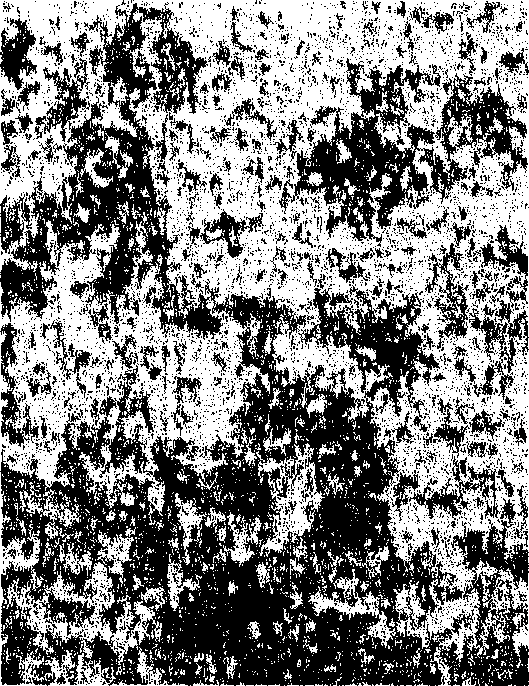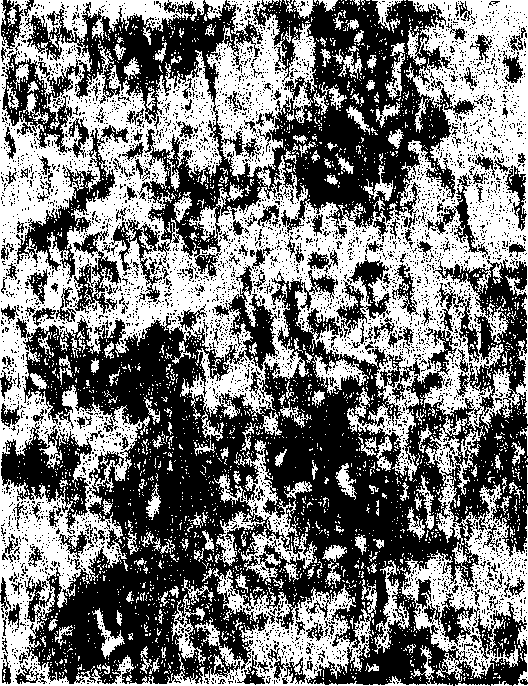Copper-tungsten-carbon-titanium-rare earth alloy material and production thereof
A technology of rare earth alloy and tungsten carbide, which is applied in the field of material chemistry, can solve the problems of Cu-WC series materials, such as the limitation of applicability and satisfaction, unstable internal structure, poor processability and processability, etc., and reduce the oxidation of contact surface Formation of film, improvement of manufacturability and mechanical properties, effect of performance improvement
- Summary
- Abstract
- Description
- Claims
- Application Information
AI Technical Summary
Problems solved by technology
Method used
Image
Examples
Embodiment 1
[0043] 1. Mixing: Weigh 5kg of WC, 1kg of C, 0.8kg of Ti, 0.1kg of La, and 93.1kg of Cu according to the formula, pass through a 80-200 mesh sieve after crushing, put into a mixing tank, and mix for 1-3 hours.
[0044] 2. Mechanical alloying reaction: Put the mixed powder into the material tank of the high-energy ball mill, put steel balls and grinding blocks with a volume three times the powder volume, seal the tank mouth, vacuumize to -0.1Mpa, and then Fill in 0.03Mpa nitrogen as a protective gas, turn on the cooling system and control system of the high-energy ball mill, and mechanically alloy for 5 hours; after the powder in the high-energy ball mill is cooled, take out the powder, pass through a 200-mesh sieve, and use a particle size smaller than 200 mesh Powder, the powder that cannot pass through the 200 mesh sieve is put back
[0045] Pulverized in a high energy ball mill.
[0046] 3. Granulation: Put the powder prepared in step 2 into a granulator, add paraffin to g...
Embodiment 2
[0053] 1. Mixing: Weigh 12kg of WC, 2.5kg of C, 1.2kg of Ti, 1.0kg of La, and 83.3kg of Cu according to the formula, pass through an 80-mesh sieve after crushing, put into a mixing tank, and mix for 1 hour.
[0054] 2. Mechanical alloying reaction: Put the mixed powder into the material tank of the high-energy ball mill, put steel balls and grinding blocks with a volume 5 times the powder volume, seal the tank mouth, vacuumize to -0.1Mpa, and then Fill in 0.03Mpa nitrogen as a protective gas, turn on the cooling system and control system of the high-energy ball mill, and mechanically alloy for 10 hours; after the powder in the high-energy ball mill is cooled, take out the powder and pass through a 200-mesh sieve.
[0055] 3. Granulation: Put the powder prepared in step 2 into a granulator, add stearic acid to granulate, and the mass ratio of stearic acid to powder is 0.02-0.03:1. Then transfer the granulated material to a box-type resistance furnace and heat at 700°C for 3 hou...
Embodiment 3-7
[0062] The copper-tungsten carbide-carbon-titanium-rare earth alloy material was prepared by the same method as in Example 1. The names and proportions of specific raw materials used in Examples 3-7 are shown in Table 1.
[0063] raw material name
PUM
 Login to View More
Login to View More Abstract
Description
Claims
Application Information
 Login to View More
Login to View More - R&D
- Intellectual Property
- Life Sciences
- Materials
- Tech Scout
- Unparalleled Data Quality
- Higher Quality Content
- 60% Fewer Hallucinations
Browse by: Latest US Patents, China's latest patents, Technical Efficacy Thesaurus, Application Domain, Technology Topic, Popular Technical Reports.
© 2025 PatSnap. All rights reserved.Legal|Privacy policy|Modern Slavery Act Transparency Statement|Sitemap|About US| Contact US: help@patsnap.com



